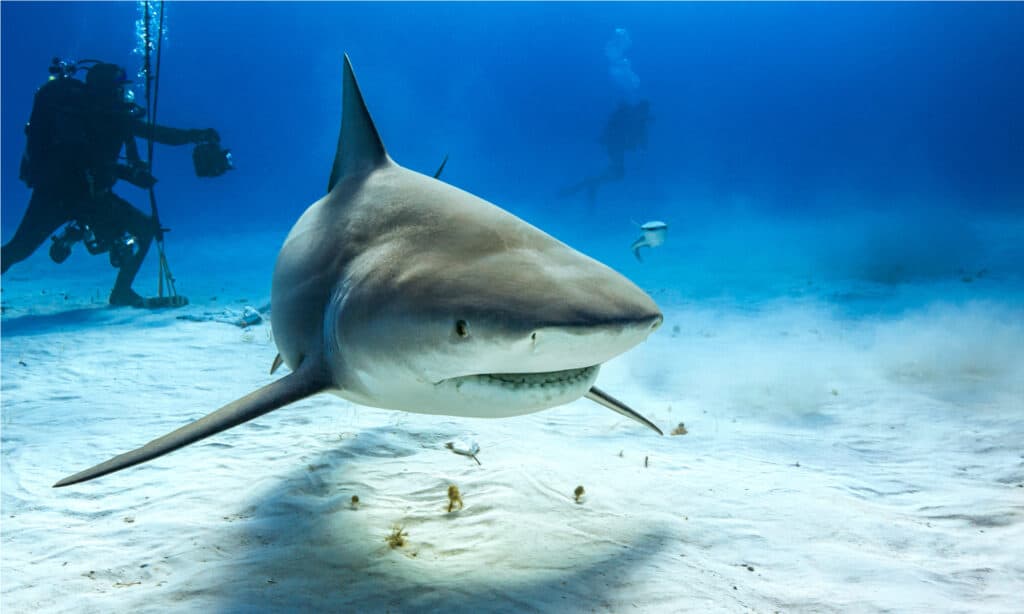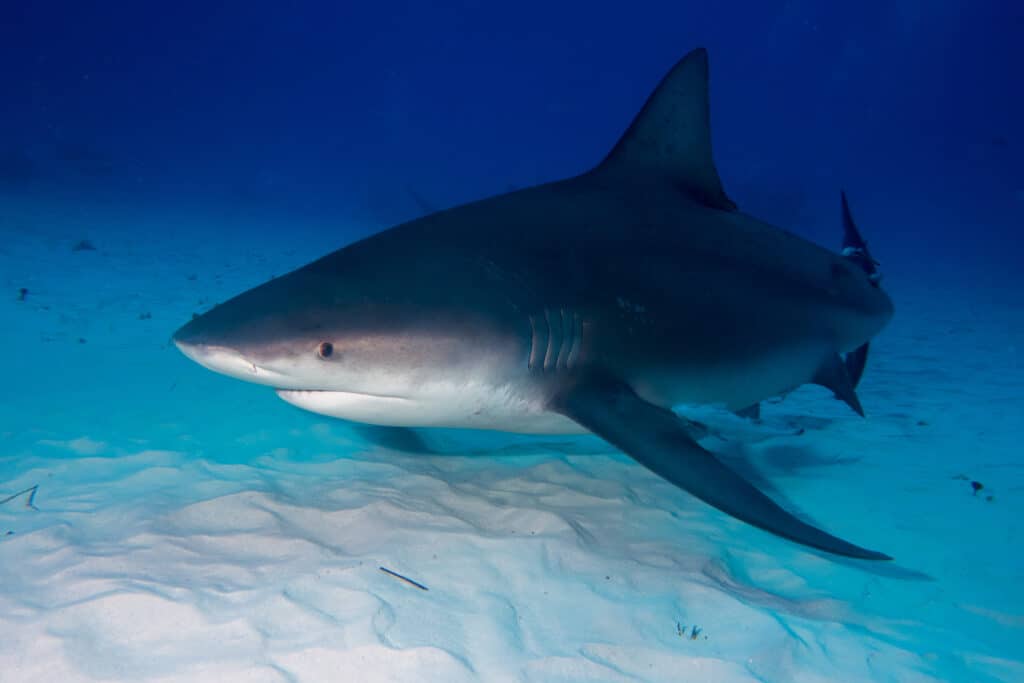The bull shark is one of the most notorious yet fascinating sharks in the world. Famous for being ruthless hunters, they are feared around the world. With their stocky bodies and frighteningly sharp teeth, bull sharks certainly cut an imposing sight in the water. Although they are not quite as large as the great white, bull sharks still manage to reach an impressive size. As they favor warm coastal waters, it’s no surprise then that Florida is home to many of these unique sharks. But just how big are Florida’s bull sharks? Join us as we discover the biggest bull shark ever caught off Florida!
Bull Sharks: Formidable Hunters with a Ferocious Appetite
Bull sharks (Carcharhinus leucas) are large, stocky-bodied requiem sharks. They live in warm, shallow water worldwide and even in some rivers. The average size of a bull shark is around 8 feet, with females being larger than males. However, lengths of up to 11 feet are not that uncommon, with most weighing up to 500 pounds. Bulls sharks have broad heads with rounded snouts. They also have an incredibly muscular body which is pale grey above and lighter underneath.
Bull sharks have a particularly aggressive nature and a reputation that is almost as notorious as that of the great white. Although great white sharks are generally believed to be the most dangerous, bull sharks are close up there with them. They are known for being responsible for a high number of unprovoked attacks on humans. They are credited with being the inspiration for the Jaws novel, following their part in the deadly 1916 Jersey Shore shark attacks upon which it is based.
Bull sharks are solitary and opportunistic hunters which use the “bump and bite” method. This is where they first bump their prey with their nose to investigate it and see if it is edible before they then bite it. After the initial bite, they tend to continually bite their prey until they are dead. They are apex predators which prey on a wide variety of food. Their diet usually includes bony fish, smaller sharks, turtles, birds, stingrays, crustaceans, and dolphins. Adults have very few natural predators. However, juveniles are preyed on by tiger sharks, sandbar sharks, and other bull sharks.
Reproduction

The largest bull sharks are usually the breeding females.
©Carlos Grillo/Shutterstock.com
When we talk about breeding female bull sharks generally being the largest, it’s actually no wonder as they take around 10 years to fully mature. Full maturity for females is reached once they are 6 to 7.5 feet long. Incredibly, they are unable to breed until they reach this size. Maturity is a little shorter for males at 5 to 7.4 feet long.
Bull sharks are viviparous. They give birth to live young who are born after a 10 to 11-month gestation period. Litter size varies between 1 and 13 pups. They are fully formed and approximately 30 inches long at birth. The female doesn’t rear her young, and the pups are left to fend for themselves immediately after birth.
Biggest Bull Shark ever Caught in Florida

The largest bull shark in Florida was a female weighing a massive 1,000 pounds!
©HakBak/Shutterstock.com
The biggest bull shark ever caught in Florida was a massive 1,000-pound monster that was caught in 2012. The 10-foot-long female was caught off the Florida Keys by marine scientist Neil Hammerschlag as part of a tagging procedure. Each shark he and his team catch is fitted with an ID tag, and then blood samples are taken before it is released back into the water. Although he has caught more than 1,000 sharks in his lifetime, he certainly didn’t expect to catch such a giant.
Hammerschlag describes the moment of pulling in the fishing line as “not knowing if they were pulling up a sunken boat, a monster shark, or a school bus”. Luckily, it was neither a boat nor a bus. Instead, it was one of the largest bull sharks to have ever been seen. The sheer bulk of the shark quickly became evident when they pulled it onto the special drum next to the boat so it could remain in the water while they worked. Although bull sharks don’t often reach such colossal size, when they do, they are typically the oldest and largest breeding females.
Biggest Caught for Sport
Outside of Hammerschlag’s shark, the largest bull shark caught in Florida for sport and properly weighed was a 551-pound shark that was caught near Palm Beach in 2008. Incredibly, this shark was caught by a 12-year-old boy and broke the previous record, which had stood for 27 years! Aidan Murray Medley had been fishing for half a day before he landed the huge shark. The bull shark put up a massive fight that lasted more than 20 minutes. When he reeled it in, it soon became clear why, as it turned out to be an impressive 9.58 feet long.
Away from Florida, the largest bull shark caught on a rod was caught in Australia and weighed almost 772 pounds. Although large, it is small compared to Hammerschlag’s shark!
What Else is Unique about Bull Sharks?
As we mentioned earlier, bull sharks are believed to be responsible for the Jersey Shore attacks. The main defining reason why they are blamed is that two of the attacks occurred up a creek in freshwater. The ability to survive in freshwater is easily the most unusual and fascinating thing about bull sharks. Although a very small number of shark species live exclusively in freshwater (true river sharks), bull sharks are the only ones who can move between the two types of water interchangeably and thrive in both.
The main reason that they are able to do this is because of their ability to regulate their bodies depending on the amount of salt in the water and their large oil-filled liver. Sharks that live in freshwater have larger livers than marine sharks as freshwater is less buoyant than saltwater. This is actually one of the reasons that bull sharks have such thick, stocky bodies.
The photo featured at the top of this post is © Carlos Grillo/Shutterstock.com
Thank you for reading! Have some feedback for us? Contact the AZ Animals editorial team.







